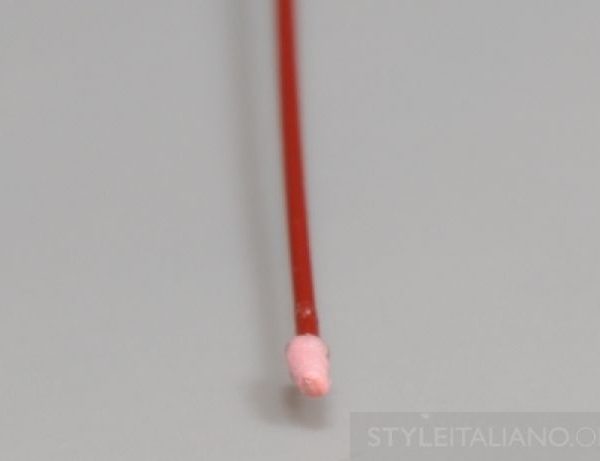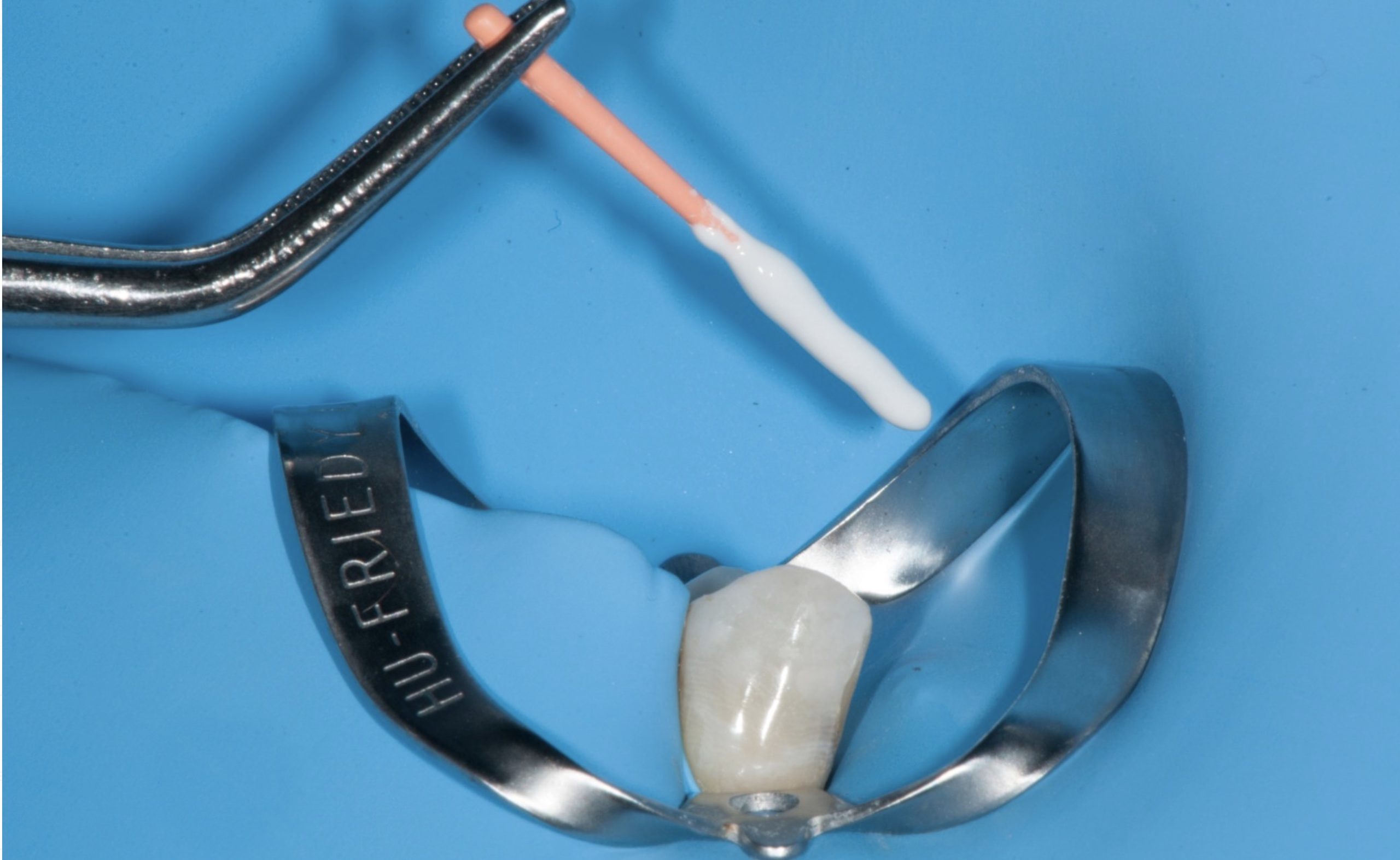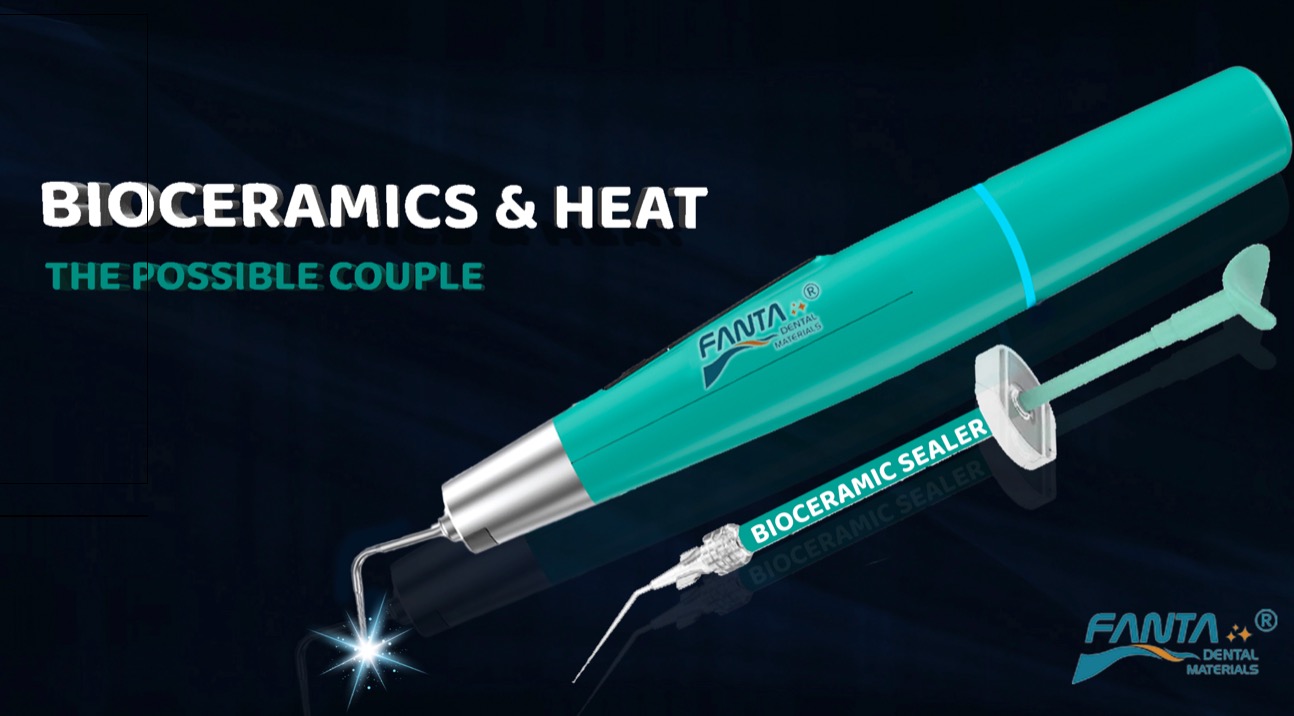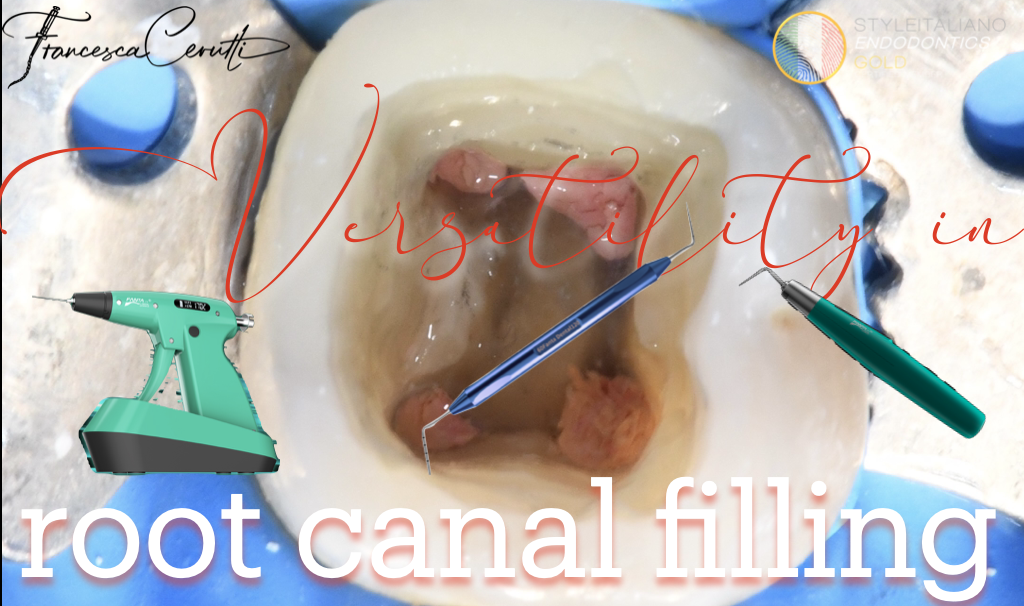
Versatility in root canal filling
29/02/2024
Francesca Cerutti
Warning: Undefined variable $post in /var/www/vhosts/styleitaliano-endodontics.org/endodontics.styleitaliano.org/wp-content/plugins/oxygen/component-framework/components/classes/code-block.class.php(133) : eval()'d code on line 2
Warning: Attempt to read property "ID" on null in /var/www/vhosts/styleitaliano-endodontics.org/endodontics.styleitaliano.org/wp-content/plugins/oxygen/component-framework/components/classes/code-block.class.php(133) : eval()'d code on line 2
Root canal filling is a crucial step of endodontic treatment and its quality has been proven to be related to the outcome of the therapy. A recent review has evidenced that endodontically treated teeth presenting overfilled and undefilled root canals presented periapical radiolucencies more than teeth with good fillings.
The most used materials to fill root canals are gutta percha and sealer, that can be combined with cold or warm techniques. Among cold techniques we find the lateral compaction of the gutta percha and the single cone technique. When considering warm techniques, one can choose between warm vertical compaction of the gutta percha, coneless/bioconeless and carrier based techniques.
The Literature has evidence that no material or technique has proven to be superior to the others in terms of outcome, so the choice of which filling technique fits best a given clinical case is up to the clinician.
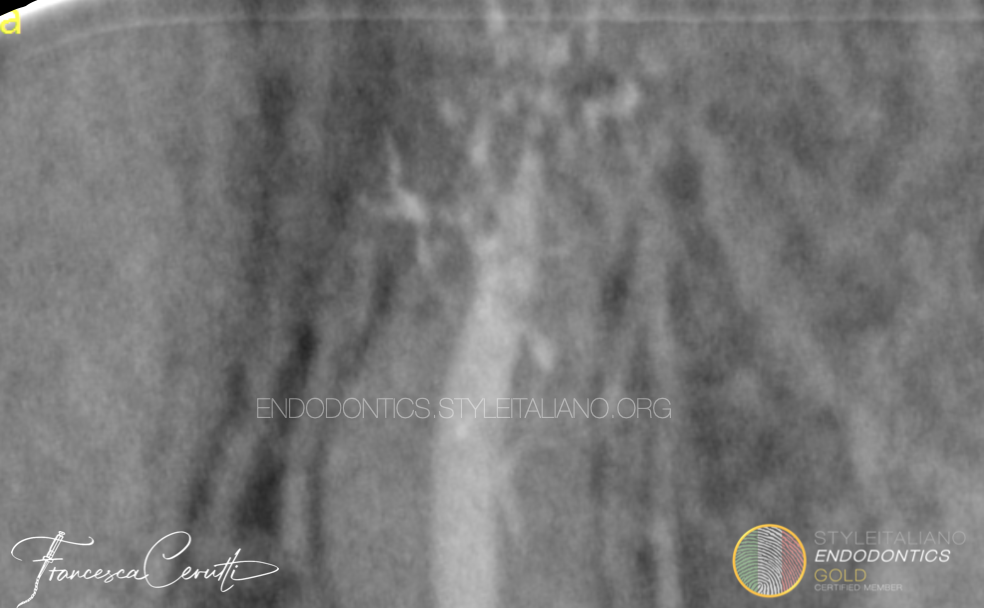
Fig. 1
Aim of the root canal filling is to seal tridimensionally the root canal system, including the main foramen, accessory canals and dentinal tubules. While filling one tries to entube any residual bacteria or irritant, avoiding the communications between endodontum and peridontium and preventing the reinfection of the root canal system.
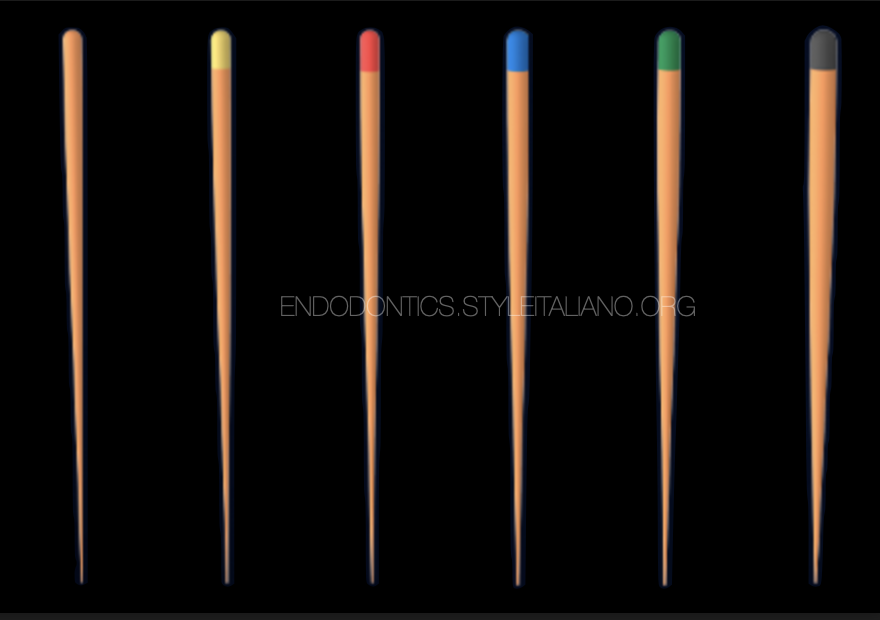
Fig. 2
Gutta percha points are composed by gutta percha, zinc oxide eugenol, waxes and resins and their properties slightly change according to the percentage of these elements in the point.
This material is widely used in endodontic filling because it is temperature sensitive, radiopaque, biocompatible, dimensionally stable, easy to use, does not color the tooth and is retractable.
The main drawback of gutta percha is that is has no adhesive qualities, therefore it has to be combined with a root canal sealer.

Fig. 3
Gutta percha can be combined with different types of root canal sealer. The primary role of the sealer is to obliterate the irregularities between the root canal wall and the core material. Almost all of today's root canal filling techniques use a sealer to enhance the seal of the root canal filling.
Root canal sealers are used for the following purposes:
- cementing (luting, binding) the core material to the canal
- filling the discrepancies between the root canal walls and core material
- acting as a lubricant
- acting as an antimicrobial agent
- acting as a marker for accessory canals, resorptive defects, root fractures and other spaces into which the main core material may not penetrate.
The requirements and characteristics of an ideal sealer are:
- non-irritating to periapical tissues
- insoluble in tissue fluids
- dimensionally stable
- hermetic sealing ability
- radiopaque
- bacteriostatic
- sticky and good adhesion to canal wall when set
- easily mixed
- non-staining to dentine
- good working time
- readily removable if necessary.
No current material satisfies all these requirements but many work well in clinical practice, even if some of them exhibit some degree of toxicity when freshly mixed, thus they temporarily produce varying degrees of periapical inflammation that does not appear to prevent tissue healing.
Most sealers are absorbed to some extent when exposed to tissue fluid, so the volume of sealer must be kept to a minimum with the core material forming the bulk of the root filling. Some gutta-percha techniques tend to force sealer apically and laterally via the foramen and accessory canals.
The passage of sealer into the periapical tissues is not encouraged, however, clinical experience suggests that most excess sealer in the periapical region is absorbed with time. Anyway, large volumes of extruded sealer must be avoided.
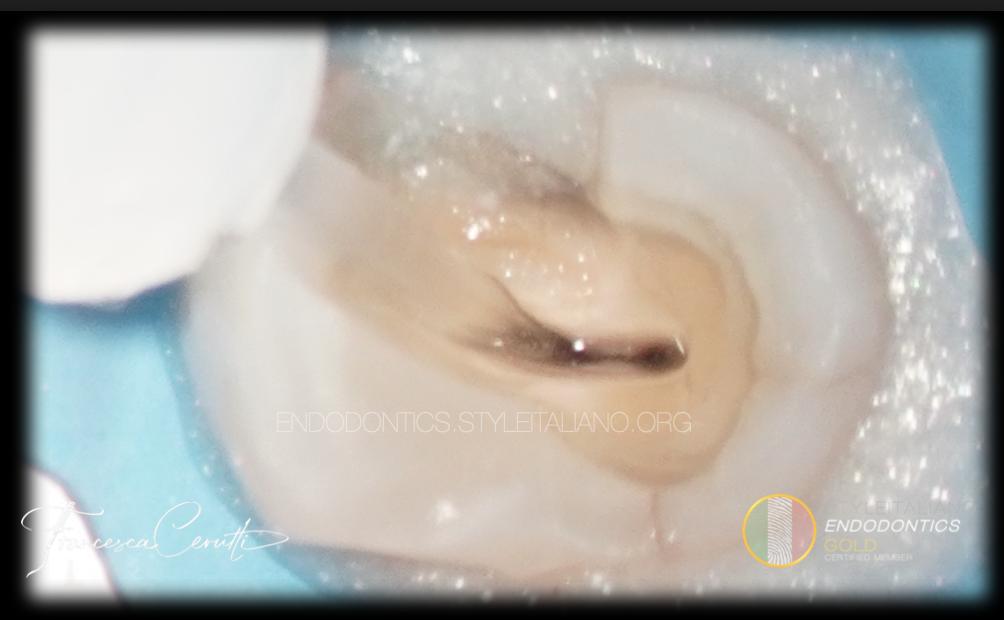
Fig. 4
Before filling the root canal system one has to be sure the shaping and cleaning procedures have been carried out correctly.

Fig. 5
When drying the root canal system it is possible to evidence confluences.

Fig. 6
Once the root canals are clean and dry, it is possible to proceed to the next step
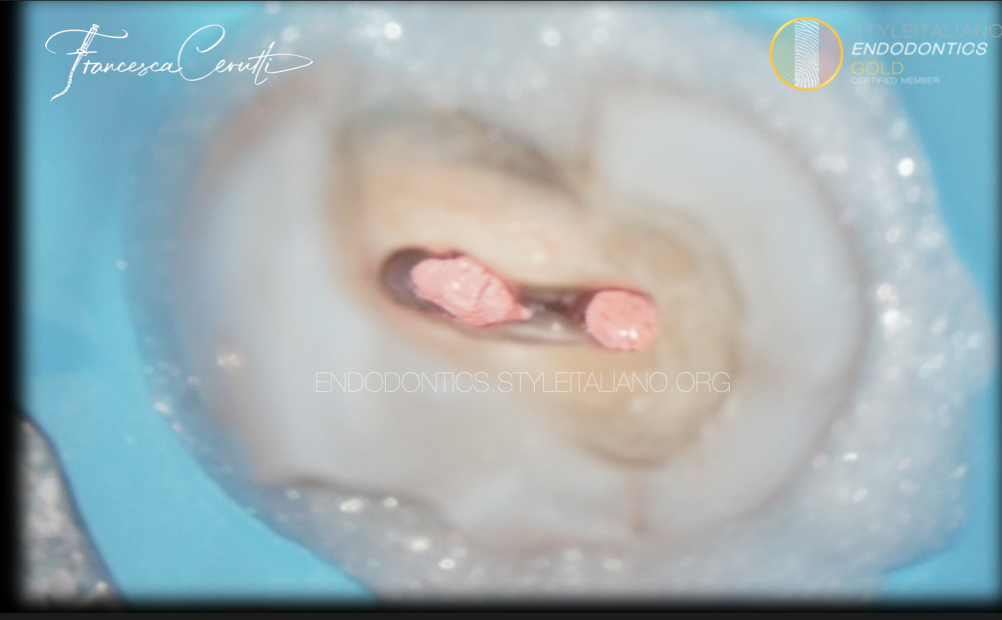
Fig. 7
This case has been filled with the warm vertical compaction of the gutta percha in the main canal and the coneless technique in the confluent canal.
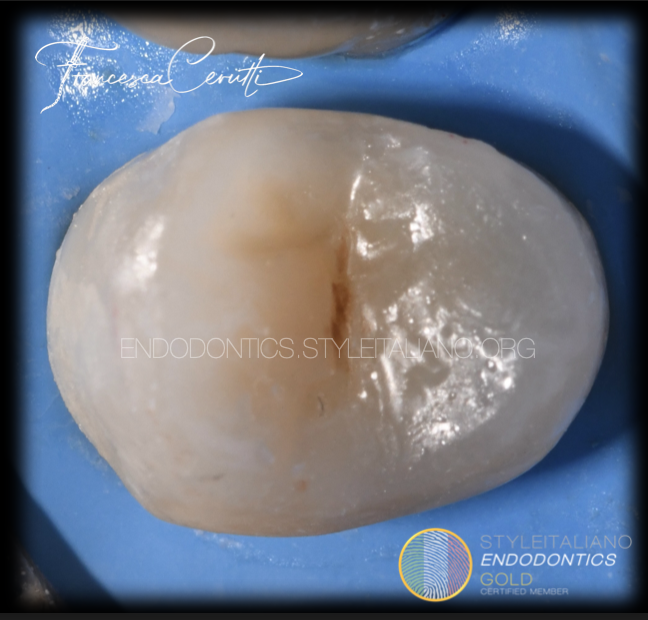
Fig. 8
After the root canal filling, a composite build up was done, followed by preparation and scan. One week later an indirect composite restoration has been luted.

Fig. 9
Post operative photo and X-ray.

Fig. 10
Cold root canal filling techniques are widely used, easy to learn, low cost, allow a controlled placement of the gutta percha and give good results if well managed.
In case of root canals with an irregular shape, one can consider to use more than one gutta percha point combined with the sealer, placing one master point and some accessory points in order to reduce the volume of root canal sealer into the root canal.
To do this technique one has to select a master cone, insert the preferred root canal sealer into the root canal system, position the gutta percha point, cut the gutta percha protruding from the canal and pack it with a plugger
A correct adaptation of the gutta percha point to the preparation is mandatory to achieve a good root canal filling. One should always check the cone fit. When correct, one should feel the tug back.
The selected sealer is placed into the root canal system
The gutta percha points are then positioned
The part of the gutta percha point extruding from the orifice is cut by means of eHeather (Fanta Dental)
A plugger is used to pack the gutta percha at the orifice

Fig. 11
Personally, I like to use this technique combining the single cone with a calcium-silicate based sealer.
This technique can be used in most of the cases, but is particularly indicated when it is difficult or impossible to bring the heat plugger and the pluggers up to 4 mm from the working length, due to patient-related factors (i.e. reduced mouth opening) or tooth-related factors (position, anatomy, etc.)
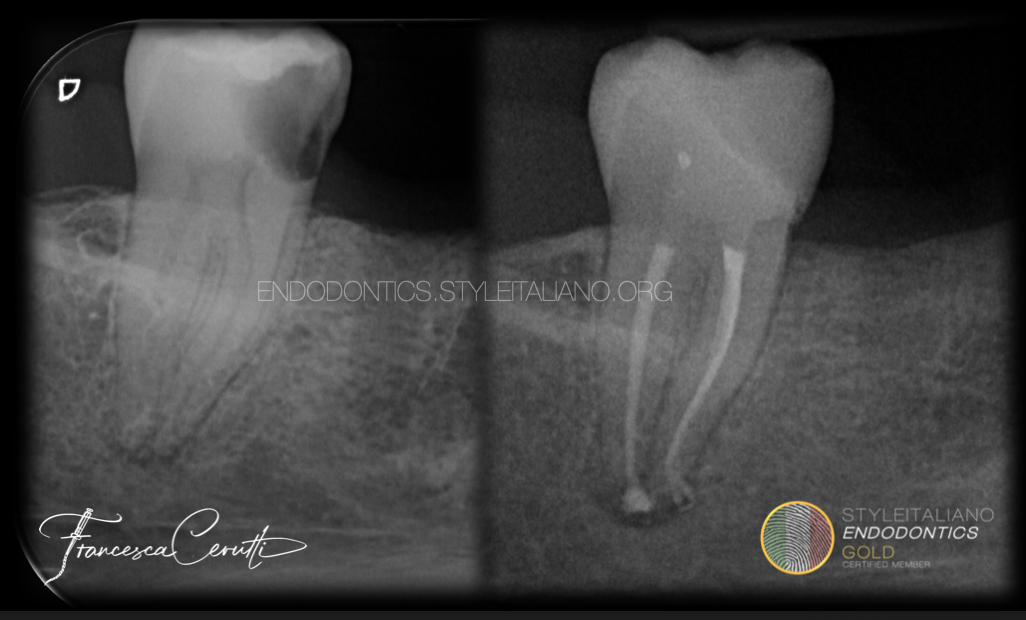
Fig. 12
Another case in which I used the single cone + calcium silicate based sealer technique: the mesial canals are thin and long, the tooth is a second lower molar.
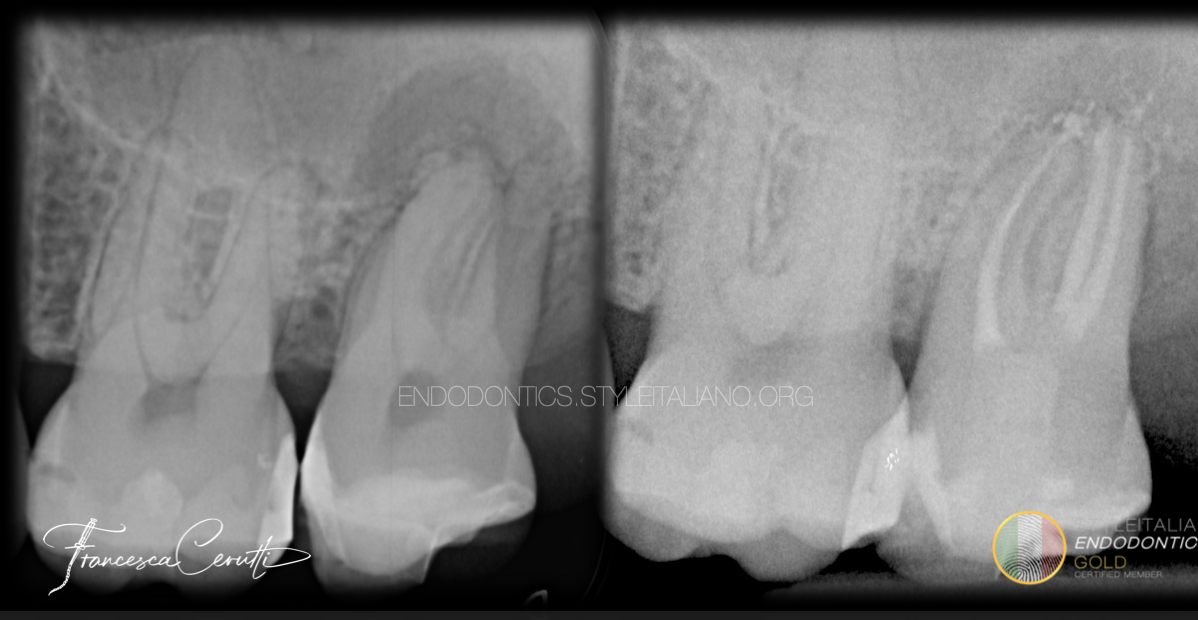
Fig. 13
The presence of an endo-periodontal lesion can be another indication to combine gutta percha and calcium silicate based sealer because these sealers promote healing due to their high pH and their osteoinductive and osteoconductive properties.
If one wants to combine the favorable properties of the calcium silicate based sealers and the high density filling typical of the warm vertical compaction technique, having a gutta percha heater where one can set the temperature is mandatory.
In eHeather, for example, one has the possibility to choose among 5 different programs, ranging from 110 to 230°C.
Before filling, it is necessary to try the tips of eHeater in order to find the size that fits best the root canal
The tip can then be mounted. Then, it will be possible to select the temperature up to which one wants to heat the gutta percha. The heat will be released for 5 seconds, then the device will cool to avoid damages to the peridontium.
The rubber stop is positioned 4 mm short from the working length, then the eHeater is inserted into the root canal while pushing the button. One will stop until the rubber stop reaches the reference point. After 3-4 seconds it is advised to stop heating, then wait for 10 seconds. In the end, heat will be applied for 1 seconds to make the detachment of the tip from the GP easier (separation heat).
The softened gutta percha is then packed with a plugger. The down packing step is complete. In case one has to place a post, it can be considered to stop here with the root canal filling and leave the middle and coronal third of the canal empty.
In case no post is needed, one has to proceed with the back filling step.
For this step, a gutta percha extruder has to be used.
Fanta Dental released eFiller, a back filling gun that allows choosing different type of needle to fit most of the root canal preparations.
The gutta percha is heated in 14 seconds
With a soft pressure, the thermoplasticized gutta percha is then extruded.
The root canal obturation is completed by inserting eFiller in the root canal and extruding the warm gutta-percha

Fig. 14
Pre operative X-ray
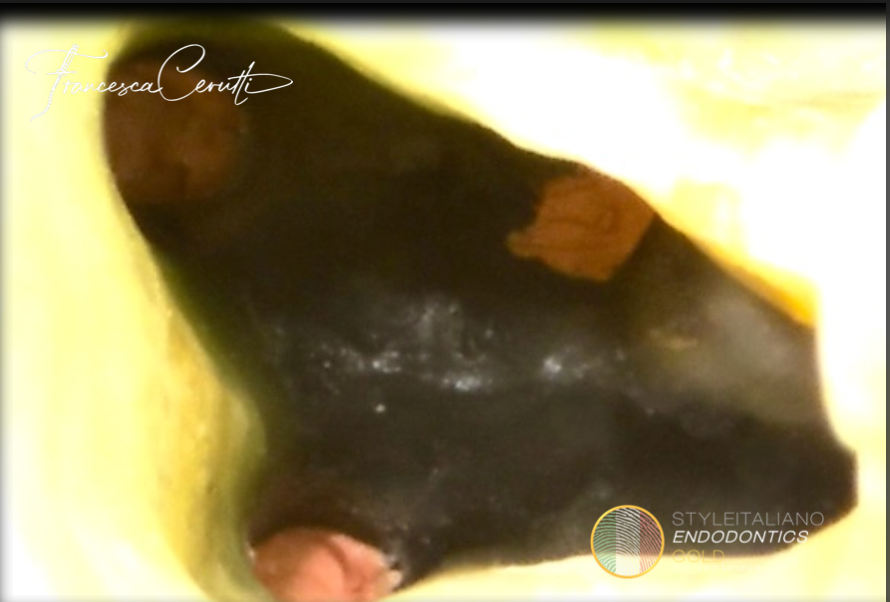
Fig. 15
Root canals filled with the modified warm vertical compaction technique: down packing with eHeather, back filling with eFiller by Fanta Dental
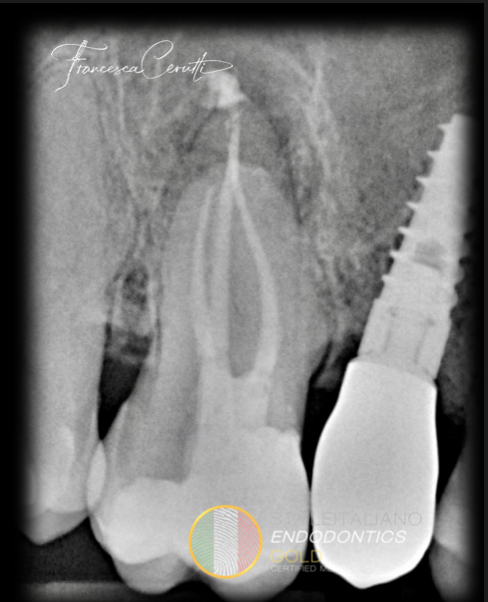
Fig. 16
Post operative X-ray
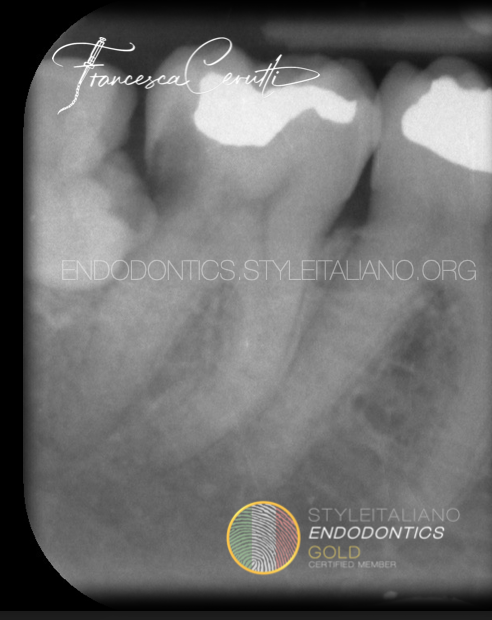
Fig. 17
The warm vertical compaction technique is great to obtain a high density filling and increases the chance of filling the anatomical intricacies of the root canal system. It can be used with conventional ZOE sealers with success.
Pre operative X-ray
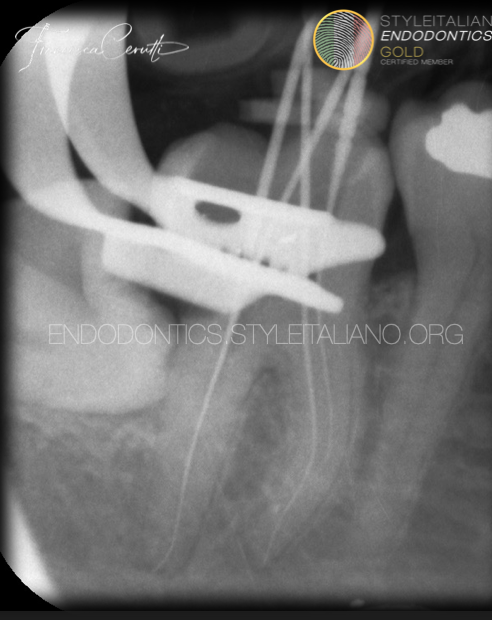
Fig. 18
Working length
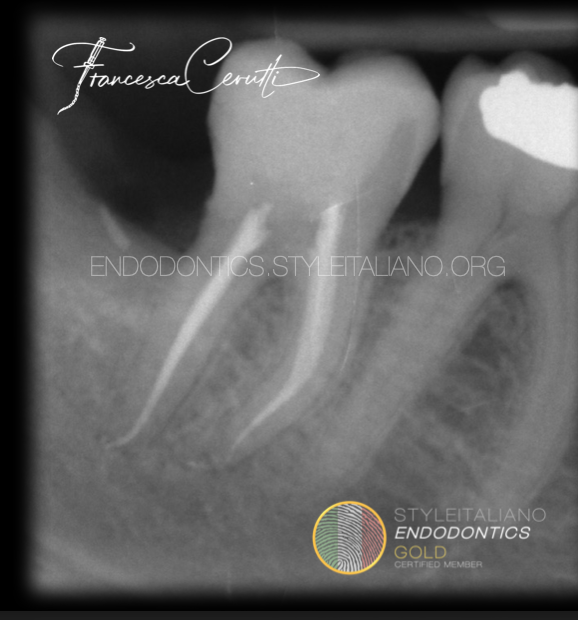
Fig. 19
Post operative
Conclusions
Root canal filling is a crucial step of the root canal treatment. The clinician should pick the filling technique that suits the case the most. Fanta Dental eHeater and eFiller are tools that allow managing the vast majority of clinical scenarios.
Bibliography
Abdellatif D, Amato A, Calapaj M, Pisano M, Iandolo A. A novel modified obturation technique using biosealers: An ex vivo study. Journal of Conservative Dentistry. 2021;24(4):369-73.
Bhandi S, Mashyakhy M, Abumelha AS, Alkahtany MF, Jamal M, Chohan H, et al. Complete Obturation-Cold Lateral Condensation vs. Thermoplastic Techniques: A Systematic Review of Micro-CT Studies. Materials (Basel). 2021;14(14).
Camilleri J. Sealers and warm gutta-percha obturation techniques. J Endod. 2015;41(1):72-8.
Pirani C, Camilleri J. Effectiveness of root canal filling materials and techniques for treatment of apical periodontitis: A systematic review. Int Endod J. 2023;56 Suppl 3:436-54.



